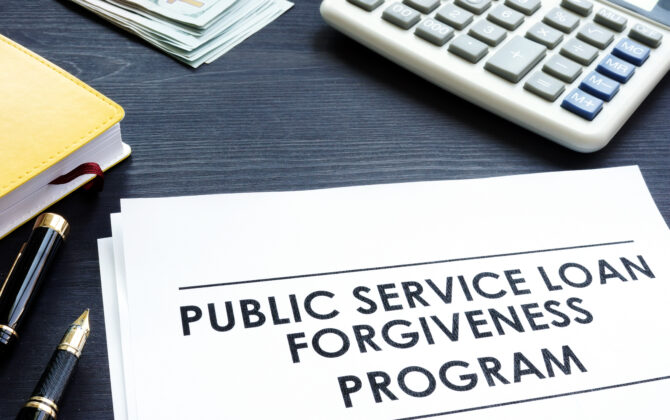For those with a passion for helping others, a career in the nonprofit sector is worth pursuing. However, nonprofit work is often associated with low pay, presenting challenges for those with significant student loan debt. Fortunately, several options are available to those working in the nonprofit sector that could help them efficiently navigate their student loan payments while seeking out meaningful careers.
Student Loan Forgiveness for Nonprofit Workers
Several options are available to those working in the nonprofit sector that could help them efficiently navigate their student loan payments while seeking out meaningful careers.


Table of Contents
Public Service Loan Forgiveness (PSLF) and nonprofit work
Nonprofit work is intrinsically linked to student loan forgiveness due to a recognition of the vital — yet often underpaid—services that nonprofit workers contribute to society. These workers are considered public servants, as individuals who serve in a government institution or a nonprofit organization that has a 501(c)(3) designation. Public servants can also work for private nonprofit organizations that may not carry this designation but provide certain types of qualifying public services.
One of the key programs aimed at nonprofit workers is the Public Service Loan Forgiveness (PSLF)Program.1 This program can offer eligible borrowers the opportunity for loan forgiveness after 10 years if they have satisfied the requirements of making 120 qualifying payments while working full-time for an eligible employer. Some additional typical areas of employment include public safety, education, public health, or environmental management, among other fields.
This opens a pathway for a vast range of workers to become eligible for student loan forgiveness.
Requirements to qualify for Public Service Loan Forgiveness as a nonprofit worker
Qualifying for the PSLF program involves meeting several requirements. Aside from making 120 qualifying payments, you must be employed full-time by a government or nonprofit organization, have federal Direct Loans (or consolidate other federal student loans into a Direct Loan), and be enrolled in an Income-Driven Repayment plan.
How to choose an Income-Driven Repayment plan
An Income-Driven Repayment (IDR) plan is a type of student loan repayment plan that caps your monthly loan payments at a percentage of your discretionary income. IDR plans are crucial for those seeking loan forgiveness as they can help keep payments manageable while you’re working towards forgiveness. Additionally, enrollment in IDR is a requirement for anyone seeking PSLF.
IDR is a federal program with several different plan types, known as Income-Contingent Repayment (ICR), Income-Based Repayment (IBR), Pay As You Earn (PAYE), and Saving on a Valuable Education (SAVE, formerly REPAYE).
Challenges to SAVE
Multiple legal challenges made by states to the Saving on A Valuable Education (SAVE) plan could impact implementation of key aspects of the plan. For the most up-to-date developments, visit studentaid.gov.
How to apply for Public Service Loan Forgiveness
Once you have verified your eligibility and qualifying payments, you can apply for PSLF via studentaid.gov. The federal aid website has a PSLF Help Tool specifically for PSLF applicants.
To apply, you submit a form, which the Help Tool will assist you in preparing and signing. It will also allow you to verify your employer’s eligibility and request their certification. Remember to certify your employment every year and any time you change employers. In recent months, there have been changes (and proposed changes) made to the PSLF program to make it easier to qualify for the program. Keep track of government updates via studentaid.gov.
Tips to manage student loan payments before forgiveness
While student loan forgiveness remains the light at the end of the tunnel, it’s essential to effectively manage your loan payments until forgiveness kicks in. First and foremost, making your payments is a key element of qualifying for forgiveness. It’s also important for your financial stability and routine. Aside from keeping on top of your repayment plan and ensuring you can make your loan payments on time, you should also be well-versed on your other repayment options, considering loan consolidation options if necessary, and keeping track of your progress towards forgiveness.
Final words: Nonprofit student loan forgiveness
The road to student loan forgiveness for nonprofit workers may seem complex, but with research and careful navigation, the result — relief from debt while pursuing a fulfilling career in the nonprofit sector — is worth the effort. Remember, the key to reaching this goal lies in understanding the requirements, choosing the right repayment plan, and maintaining consistent, on-time payments. To help sort out the details and ensure you’re on the path to forgiveness, schedule a consultation with our student loan specialists.
Don’t miss the latest financial resources.
This site is protected by reCAPTCHA and the Google Privacy Policy and Terms of Service apply.
Get tailored Laurel Road resources delivered to your inbox.
Search Results


